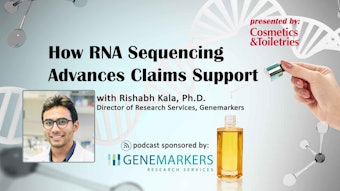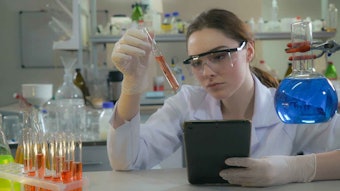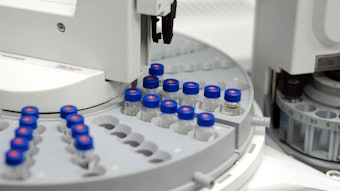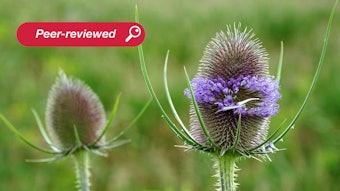Finding something local sometimes requires venturing to the other side of the world. This was my experience with the expression, "In the land of the blind, the one-eyed man in king," which I found also existed in English. According to Brian Budzynski, the Book Editor for Allured Business Media, this expression was recorded by Desiderius Erasmus Roterodamus, a Dutch humanist author who collected more than 3,000 proverbs from the classic literature, including this one, in a book called Adagia. This fact embarrassed me, as Erasmus was one of the greatest philosophers from the Netherlands. Others are Spinoza and Hugo de Groot, which should help correct my image. Although this research took me to the United States, it came close to home, as Erasmus was the unlawful son of a priest that lived in Gouda, the Netherlands, where this author resides. Erasmus was conceived in Gouda and born close to the Erasmus Bridge in Rotterdam. Clearly, in the land of the blind, the one-eyed man is king. I was completely blind and Kozlowski was the one-eyed queen.
This may have little to do with cosmetic science; however, following the positive feedback from a previous column on the placebo effect, I want to readdress clinical study design in relation to cosmetic claim substantiation—this time discussing when to perform double-blind studies and when to perform single-blind studies.
Double-blind studies are studies in which both the subject participating in the trial and the investigator judging the outcome do not know if the subject received an active formulation or a placebo. Therefore, both the subject and the investigator do not know whether the treatment should have any effect, which removes any form of bias. When one is trying to obtain an objective result on the effectiveness of an active in a formulation, this is the preferred study design in clinical trials.
The essential words in the sentence above are “the effectiveness of an active in a formulation.” This means that most clinical studies performed by suppliers of active ingredients will be double-blind, as they often want to show the effectiveness of an active in a formulation. Assuming the active is active, the supplier will supply the active to a manufacturer of cosmetic products. But the situation changes when the end manufacturer is not interested in showing the effectiveness of the active in its formulation, but will be interested in the effectiveness of the formulation. Therefore, while the supplier in answering whether an active is active, the end manufacturer is trying to answer whether a formulation is active. This differentiation changes the clinical trial design fundamentally. Now a single-blind study is required.
A single-blind study is a study where either the investigator or the subject knows which treatment was received or judged. In most cases, it is the investigator that knows, and this is called a subject blinded trial. In the opposite case, it is the subject that knows, and this is called an investigator blinded trial. Here, some degree of bias would be possible but often only in theory, as will be shown later.
The necessity for a single-blinded trial is that the placebo is different. To know that an active is active, a supplier must compare the active in a formulation to the same formulation without the active. This is called the placebo. Logically, to know that a formulation is active, one must compare the formulation to the same formulation without the formulation. But what is that—a formulation without a formulation? As this author has previously states, that is nothing. The investigator is testing against untreated skin.
Regulatory bodies claim that everything should be tested against a placebo, and many believe that “in proper science, you always test against a placebo.” The same regulatory bodies should also learn to see that there is a difference between fundamental science and applied science. In fundamental science, the question is whether an active is active and how it works. In applied science, the question is whether a formulation works. Finding out how much of the effect is caused by the active and how much by the formulation itself is fundamental science. Differentiating between fundamental science and applied science can be done by answering the question, “As a consumer, do I care?” A scientist would like to know what the effect is and why/how it is produced. A consumer wants a product to do what it is supposed to do. A consumer wants a car to drive, a CD to play music and a moisturizing cream to moisturize. Leaving personal interests of the individual consumer aside, a consumer does not care about the details of fuel combustion, the width of a laser beam or the stabilization of the orthorhombic phase of skin lipids. In such cases, a single-blind trial should be used because the subject in such a trial will always know whether he applied a product or not, or in case the subject serves as his own control, on which side of his body a product was applied.
Conducting a single-blind trail is wrong according to the regulatory bodies, who find that everything needs to be tested in a double-blind trial. Because otherwise, we will have the Clever Hans effect. Clever Hans was a horse that was claimed to have been able to perform arithmetic and other intellectual tasks. After formal investigation in 1907, psychologist Oskar Pfungst demonstrated that the horse was not actually performing these mental tasks, but was watching the reaction of his human observers. Pfungst discovered this artifact in the research methodology, wherein the horse was responding directly to involuntary cues in the body language of the human trainer, who had the ability to solve each problem. The trainer was entirely unaware that he was providing such cues. In honor of Pfungst's study, the anomalous artifact has since been referred to as the Clever Hans effect and has continued to be important knowledge in the observer-expectancy effect and later studies in animal cognition.
Can this happen in a single-blind clinical study? It can, but with Clever Hans, it took years of practice. It took years of social interaction to learn to read the signals from the trainer, and that was a Clever Hans. It took humans centuries to discover the effect, admittedly because it is subtle. But to address the question whether the Clever Hans effect happens in a single-blind clinical study, one has to realize that the reality of a clinical study is different. The investigator does not even know the subject and for them, the volunteer is nothing more than another test tube or something to measure a reaction on. There is no social interaction between the subject and the investigator. The professional evaluator is behaving as a professional and does not speak to the subject. Social interaction is necessary for the Clever Hans effect, and that is lacking in clinical trials. If social interaction would happen once in a whole trial, that would be significant, but it cannot happen with every volunteer to explain the complete results. Volunteers are not trained, they are not horses, they are not clever and they are not called Hans. The latter, of course, may not be true.
Single-blind trails are possible and scientifically justified under specific conditions that frequently apply to the finished product manufacturer in the cosmetic industry. Some regulatory bodies understand this whereas others want a uniform response to whatever claim someone is trying to substantiate. Perhaps the regulatory bodies are double-blind. To those regulatory bodies, this author would like to say, "Wake up and stop closing your eyes for the reality of what the cosmetic industry is testing. Get off your Clever Hans horse and stop applying fundamental research principles to applied research. Open your eyes to the differences. Imagine how clever you would be if you would have an open mind towards different claims needing different study designs. You can be a single-eyed king called Hans or a double-blind Clever Hans stumbling in the dark. The choice is yours. As a cosmetic scientist with a visual impairment, I know which one I would prefer to be."
Prof. Johann W. Wiechers, PhD
Technical Advisor, Allured Publishing
Independent Consultant for Cosmetic Science, JW Solutions
Gasthuispolderweg 30 2807 LL Gouda The Netherlands
[email protected]










